
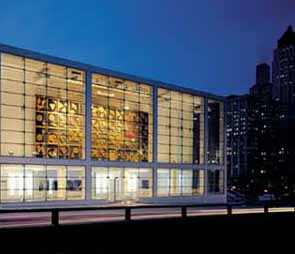 [rating=5]Forge Forward: An Honest Portrayal of Today, A Daring Question of Tomorrow
[rating=5]Forge Forward: An Honest Portrayal of Today, A Daring Question of Tomorrow
The contrasting imagery of individual vs society, singular vs collective, alone vs together seemed to flow in, throughout and around Hubbard Street Dance Chicago’s Fall Series Program, “Forge Forward”, which kicked off this evening at the Harris Theater for Music and Dance in downtown Chicago.
Dancing a program that tackles such ideas is no surprise for the 42-year old company known for their unparalleled virtuosity and versatility as well as their original, cutting-edge contemporary dance. Hubbard Street is a solidly modern dance company with a wonderfully eclectic, anything goes attitude that is constantly pushing the boundaries and evolving who they are and what they do. So, dancing a program that thematically tackles how an individual fits into the whole and how both are altered as a result, is only fitting for a company that is constantly redefining themselves and as a result redefining the world of modern dance as well.
Tonight’s program featured two new world premieres, “The Bystander,” and “This, That, and the Third,” as well as the return of Hubbard Street favorite “Grace Engine,” and was a powerful example of innovation, creative talent, and technical mastery. The dazzling execution, complicated micro-calibrated moves and deconstruction of dance itself, that are the hallmark of Hubbard Street Dance, were on full and glorious display this evening and what a joy it was to behold.
To kick off the performance, we were treated to a revival of Crystal Pite’s highly acclaimed, full-company work “Grace Engine,” first performed by Hubbard Street in 2017. Setting the conceptual stage for the evening, “Grace Engine” thematically explores the idea of the individual versus the whole by depicting the struggles and mechanics of individual effort versus the seemingly insurmountable, all-powerful industrial complex.
“Grace Engine” opens to an austere, grey space, lit by a single row of fluorescent bulbs hung perpendicular to the stage. To the sound of amplified footsteps, a lone male dancer, dressed in a uni-sex business suit, walks, pausing momentarily, before beginning a rigid yet contemplative solo. He is quickly joined by the rest of the company, similarly attired, in a writhing, contorting, eerily backlit tableaux depicting the drudgery of urban toil and the travails of the daily grind. The piece is filled with sets of frenzied movements followed by moments of frozen stillness as the dancers hurried in, over, and around each other, through crowds and back again struggling toward some unseen goal. In one striking move, the ensemble comes together in a long line that sweeps across the stage and back again struggling to stay together as if the very earth were being ripped from underneath them.
Both the score, composed by Owen Bolton, and the lighting, designed by Jim French, are striking, integral components, critical to the work, and almost a character unto themselves in how they take up and fill the whole space, surrounding and enveloping both the dancers and the audience. Overly loud footsteps, locomotive engines, the hiss of steam and train horns combined with stark fluorescent lighting pierced by bursts of blinding footlights all enmesh to create an atmosphere that is dark, foreboding and chillingly familiar in its impression of urban life.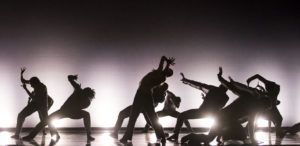
After a short intermission we were thrust right back into the fray with the much anticipated, world-premiere of award-winning, New York choreographer, Kyle Abraham’s, “The Bystander,” a work which plays with the ideas of perception vs reality and examines the themes of mystery, accusation, conflict
and blame. Performed by seven company members, each dancer plays a different character, similar to the game of Clue, and examines how an individual’s perspective can shape how they see, respond to and eventually solve the dilemma facing them. An especially timely piece, when one witnesses dancers making assumptions without evidence and placing blame based on environment and circumstance, not actual understanding or proof.
The work began with a scream and an alleged crime as three dancers, one lying prone, appear, each within their own square of light. As the two standing figures begin to writhe and twist telling their animated truth, the remaining dancers enter, to lend their kinetic side to the story. One solitary figure, the bystander, remains to the side holding her head in despair and vibrating with confusion and misery as she tries to untangle the frenzied motion around her. These ideas carry throughout the work, where we are continually met with agitated, feverish movement as the “suspects” try to convey their narratives and convince us of their truth.
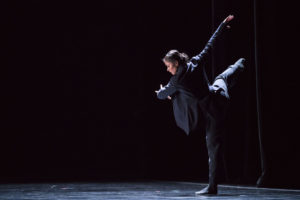 The German leder music, composed by Franz Schubert, was intentionally, over-the-top dramatic, with soaring vocals and a complex structure that complimented the fast-paced, dense dancing on stage. Over-layered, at times, by the sounds of cars passing, of a crowded dining room, or of a police dispatch and the effect is at once isolating and transportive. The neutral-toned costumes, designed by Abraham himself, were minimalistic and austere, while clearly delineating between victim, suspect and bystander, and the use of projected language woven into the work is incredibly evocative, conveying to us all the very real truth of this stunning dance, “…we are colored so differently…seen so differently…valued so differently.” A stark reality, conveyed so poignantly, in these troubled times.
The German leder music, composed by Franz Schubert, was intentionally, over-the-top dramatic, with soaring vocals and a complex structure that complimented the fast-paced, dense dancing on stage. Over-layered, at times, by the sounds of cars passing, of a crowded dining room, or of a police dispatch and the effect is at once isolating and transportive. The neutral-toned costumes, designed by Abraham himself, were minimalistic and austere, while clearly delineating between victim, suspect and bystander, and the use of projected language woven into the work is incredibly evocative, conveying to us all the very real truth of this stunning dance, “…we are colored so differently…seen so differently…valued so differently.” A stark reality, conveyed so poignantly, in these troubled times.
Following the second intermission, was the world-premiere of “This, That, and the Third,” choreographed by Rena Butler, Hubbard Street Choreographic Fellow, company member, 2019 winner of the prestigious Princess Grace Award and native of Chicago. This new work was inspired by the idea of code-switching, a practice of alternating between language, mode of communication or behavior as a way of assimilating, and examines how individuals share space and evolve in relationship to the space they occupy. “This, That and the Third,” developed for 6 dancers, is paired down and simplified by comparison to the previous works on display tonight, but is no less powerful in its emotionally vivid and technically flawless execution.
Set to original music by Darryl Joseph and Chance the Rapper, the curtain rises to reveal six dancers, each within their own square of light and dressed solely in under clothes, but with the addition of different colored socks for each performer. A percussive drum line thrums as the dancers begin to move to the beat, in complete synchronization, eventually culminating in a single dancer alone on stage dressing himself in his colors. As a second dancer enters, ethereally dressed in purples and pinks, the music changes to banjos and the entire interaction on stage alters to a hand-clapping, knee-slapping, dance around the campfire, ho-down. From here music, movement, and attitudes shift and change at incredible speed as each dancer puts on or takes off a different identity. At times both impish and sober, “This, That and the Third,” is a bold, honest and sexy look at what we do to fit in and what toll that takes on us as individuals.
Forge Forward, danced with the utter conviction and communal urgency that only Hubbard Street Artists can bring, vividly illustrates how we are all individuals in a sea of millions. And while such circumstances may seem terrifying at first, these works also offer us hope in illustrating the common bond we all share, our humanity. Emotionally vivid and contextually complex, tonight’s performance was at once challenging and thrilling and proves once again why Hubbard Street Dance Chicago is unequalled on the stage and in our hearts.
Forge Forward runs approximately 2 hours with two intermissions and will be performed at the Harris Theater for Music and Dance, 205 E. Randolph Street Chicago, IL 60601, from November 7-10, with tickets costing $25-110.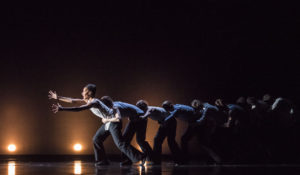
Remaining Performances:
Saturday, November 9th at 8:00PM
Sunday, November 10th at 3:00PM


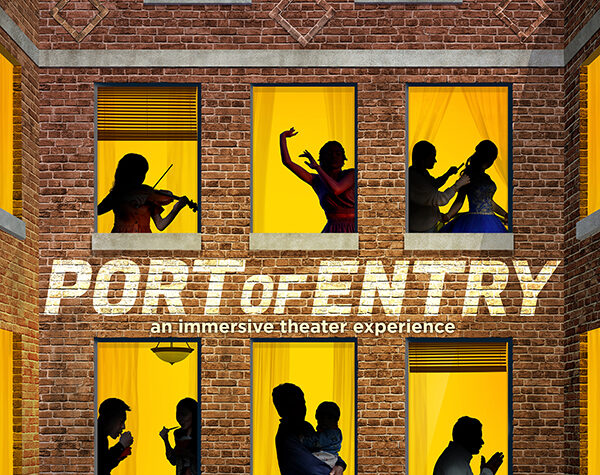

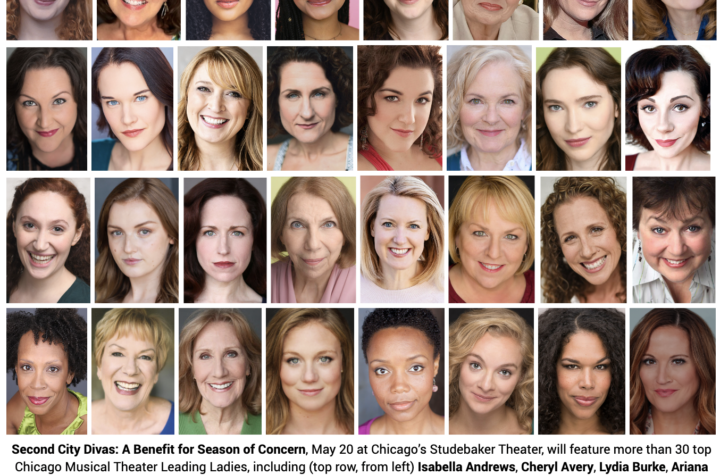

More Stories
“The Thanksgiving Play”
“Jump” reviewed by Julia W. Rath
“Judgement Day”